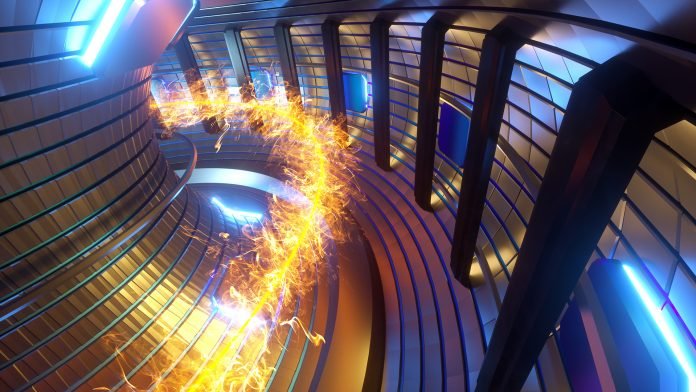Nuclear Fusion Progress Supported by Computational Modeling
Advancements in High-Performance Computing Boost Fusion Research
Dr. Bhuvana Srinivasan, an Associate Professor at Virginia Tech soon joining the University of Washington, leads a team exploring nuclear fusion energy concepts through computational modeling. High-performance computing advances have greatly benefited the field of plasma physics, essential for nuclear fusion success. Computer simulations of plasma behavior require large supercomputers and highly efficient models, allowing for insights not previously possible.
Computational Modeling: A Pillar of Fusion Energy Success
Srinivasan’s team of students, researchers, and scientists perform computational modeling to support multiple fusion energy concepts. Computational modeling plays a crucial role in the development of successful fusion concepts, as it enables scientists to make predictions, analyze data, and design experiments, even when physical facilities are limited.
Tackling Plasma-Wall Interactions for Solid Wall Devices
One challenge in fusion energy is developing materials that can withstand extreme temperatures and fluxes when in contact with hot plasmas. Dr. Srinivasan’s team collaborates with researchers at Princeton Plasma Physics Laboratory and Los Alamos National Laboratory to understand the microscopic behavior of plasma near a material wall. This understanding can aid in developing novel wall materials and methods to control fusion fuel and mitigate detrimental plasma-wall interactions.
Exploring Plasma-Liquid Wall Dynamics
In collaboration with her colleagues at Virginia Tech, Dr. Srinivasan’s team investigates the potential of using liquid walls to overcome material limitations in fusion devices. This research is supported by the ARPA-E BETHE program. Computer simulations are necessary in this area, as they allow researchers to study the behavior of fusion devices in high-energy scenarios not yet accessible through experiments.
High-Energy-Density Plasma Fusion Concepts
The recent success at the National Ignition Facility in achieving fusion ignition has been a significant milestone for the fusion community. Dr. Srinivasan and her team have performed fundamental studies to understand the mixing of hot and cold fuel in high-energy-density inertial confinement fusion concepts, and how to overcome this challenge to achieve higher fusion yields. These studies suggest that using applied magnetic fields to reduce mixing could be a promising approach.
Through high-fidelity computer simulations, Dr. Srinivasan’s team continues to contribute to the efforts to achieve powerplant-scale nuclear fusion reactors.
Fusion Energy: Computational Breakthroughs Accelerate Progress
Dr. Bhuvana Srinivasan’s Team Supports Nuclear Fusion Concepts
Dr. Bhuvana Srinivasan, an Associate Professor of Aerospace and Ocean Engineering at Virginia Tech (soon moving to the University of Washington), leads a team focused on computational modeling to support various nuclear fusion energy concepts.
A “Wright Brothers Moment” for Nuclear Fusion
Nuclear fusion has been under scientific study for around 70 years, and it is finally having its “Wright Brothers moment” as described by the media. Advances in high-performance computing have greatly benefited the field of plasma physics, which is fundamental to the success of nuclear fusion.
Tackling Plasma Dynamics for Fusion Success
Computational modeling is essential for understanding and controlling plasma behavior under fusion conditions. These simulations provide valuable insights into plasma dynamics, which can inform the design, prediction, and analysis of fusion energy concepts.
Dr. Srinivasan’s Team: Advancing Multiple Fusion Energy Concepts
Dr. Srinivasan leads a team of researchers working on computational modeling for various fusion energy concepts, such as inertial confinement fusion, magneto-inertial fusion, magnetic mirror concepts, plasma-jet merging concepts, Z-pinches, and tokamaks.
Addressing Plasma-Wall Interactions
One of the major challenges in fusion energy is developing materials that can withstand extreme temperatures and heat fluxes when in contact with hot plasmas. Dr. Srinivasan’s team collaborates with scientists from Princeton Plasma Physics Laboratory and Los Alamos National Laboratory to understand the microscopic behavior of plasma near a material wall.
Exploring Plasma-Liquid Wall Dynamics
Dr. Srinivasan and her team are researching liquid walls as a potential solution to material limitations in solid plasma-facing components. Supported by the ARPA-E BETHE program, this research aims to understand the impact of liquid walls on fusion reactor performance.
Inertial Fusion Energy: Overcoming Challenges
The recent success at the National Ignition Facility in achieving fusion ignition highlights the attainability of controlled nuclear fusion. Dr. Srinivasan’s team is focused on understanding and mitigating the mixing of hot and cold fuel to achieve higher fusion yields in high-energy-density inertial confinement fusion concepts.
Computational Modeling: The Key to Fusion Reactor Success
Dr. Srinivasan’s team continues to contribute to the community’s efforts to achieve powerplant-scale nuclear fusion reactors through high-fidelity computer simulations. Their work is vital to unlocking the potential of fusion energy as a reliable and sustainable power source for the future.











